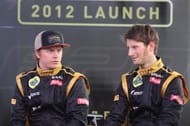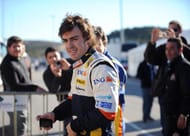Earlier in 2015, French automakers Renault, who this year supplied engines to Infiniti Red Bull Racing and junior team Toro Rosso, announced they would take a controlling stake in Lotus F1.
The Enstone-based outfit had itself been running on Renault engines for a staggering two decades until they ended that relationship ahead of the 2015 season, when they moved to Mercedes power.
Unfortunately, that move appears not to have borne them the results they will have wanted. This year, Venezuelan driver Pastor Maldonado finished only 6 races in the points, one of those by the skin of his teeth – in 10th place. ‘Crashtor’, as he is popularly known, has retired from 9 races this year; teammate Romain Grosjean has fared marginally better, with 10 points finishes, managing a podium in Belgium at the Circuit de Spa-Francorchamps after 4-time World Champion Sebastian Vettel suffered a massive tyre blowout.
It was Grosjean’s 51 points this year that were largely significant in helping Lotus manage even 6th place in the constructors’ standings, a luxury that they will not have in the 2016 season as Grosjean moves to new entrant Haas F1 Team, the only American squad on the current F1 grid.
The Frenchman was not without his own share of retirements – 6 in all.
Renault’s biggest problems this year came from another quarter, however – an Austrian one. Red Bull Racing decided earlier in the day that they wished to sever ties with the team ahead of the 2016 season, following which team principal Christian Horner and motorsport boss Helmut Marko approached Mercedes and Ferrari for engines. They were first refused by Mercedes boss Toto Wolff, who in conjunction with non-executive chairman Niki Lauda took the decision to abstain from supplying Red Bull.
It was also said that their primary driver, 3-time (and 2015) World Champion Lewis Hamilton was entirely against the decision.
Following this, Horner was said to be in talks with Ferrari principal Maurizio Arrivabene and chief Luca di Montezemelo to see if his team could use Ferrari power units next year, in a potential deal that was said to be favoured by F1 supremo Bernie Ecclestone; while Ferrari refused Red Bull, they confirmed they will be supplying junior team Toro Rosso.
Although their relationship is still fraught, it is believed Red Bull will in fact continue with Renault power, branded under Tag Heuer.
Back to the glory days: Can you hear the wins, Fernando?
Renault, after announcing a majority takeover of Lotus earlier in the year, announced last week they would officially be returning to Formula One as Renault F1. Although their takeover of Benetton (once the team of F1 icon Michael Schumacher) was completed in 2000, it was not until two years later that their name was officially changed.
They immediately signed Italian Jarno Trulli and Briton Jenson Button and although Button drove well that year, even outperforming his teammate, he would be replaced at the end of the season by Fernando Alonso.
They may not have known it at the time, but signing Alonso would be one of the best decisions the team took. In his first year with them, the young Spanish sensation won the Monaco Grand Prix – a race Renault had not won in two decades.
Although team boss Flavio Briatore had major issues with Trulli, and replaced him with former World Champion Jacques Villeneue, Renault, who had initially been in contention for 2nd in the constructors’ championship, would end up finishing third.
Another Italian joined the squad the following year, 2005 – a year that would go in their favour. Giancarlo Fisichella won the inaugural race of the year – the Australian Grand Prix, with Alonso taking the next 3 races on the trot.
The Spaniard, who is widely regarded as being a game-changer in Formula One, won his first Drivers’ championship, and Renault’s first constructors’ championship in two decades.
He carried that momentum full-pelt into the following year, winning seven of the year’s 18 races (another seven were taken by Ferrari’s Michael Schumacher, who still lagged 13 points behind Alonso in the drivers’ standings at the end of the year). A win for Fisichella in Malaysia meant Renault would take their second world championship in a row, beating Scuderia Ferrari by 5 points.
That year, Fernando Alonso Diaz, at 25-years-old, became the youngest ever double world champion. That record would last a good 5 years, until German sensation Sebastian Vettel broke onto the scene, taking a staggering four world championships – all of them consecutively.
Sadly, the team would miss out on Alonso the next year, with McLaren signing him. That year went down as one of Formula One’s darkest, with the British team implicated in the infamous Spygate – with Renault involved as well, alleged to have received confidential information from McLaren.
Nevertheless, Alonso moved that season, but that move did not last long. Both drivers performed well that season, Hamilton finishing 2nd and Alonso 3rd as Ferrari took the drivers’ championship and their driver, the Iceman, Kimi Raikkonen taking top prize.
Renault, meanwhile, still saw middling to decent performances from their drivers, Giancarlo Fisichella and Heikki Kovalainen, who took them to third in the constructors’ championships that year.
McLaren’s season, however, was characterized by a very fraught relationship between the two drivers. Alonso would leave his contract three years before it was up, returning to Renault in 2008 after his team, McLaren, were disqualified from the 2007 constructors’ championship.
They managed decent performances the following year, with team ING Renault F1 finishing in third in the drivers’ championships, with Alonso driving alongside Nelson Piquet Jr; the Brazilian would be unceremoniously let go of, replaced eventually by then-rookie Romain Grosjean.
Alonso, for his part, was picked up by one of F1’s most iconic teams, Scuderia Ferrari, coming close to winning more championships with them.
The 2010s

2010 would be Renault’s last year as ‘Renault’, as they were absorbed by Luxembourgish firm Genii Capital, and in 2011 became Lotus Renault GP. While 2010 was a partnership, 2011 saw Lotus buy a larger stake in the team as drivers Vitaly Petrov and Robert Kubica remained with the team.
Kubica was severely injured that year in a rally racing accident, and was replaced by German Nick Heidfeld.
Over the years, they saw Kimi Raikkonen – who took a retirement in the 2010 season; and French driver Romain Grosjean join their ranks in their iteration as Lotus, prior to which they also saw Bruno Senna among their ranks, without much success.
Raikkonen would remain with the team, alongside Grosjean and then fellow Finn Heikki Kovalainen until 2013, when he was offered a seat by Scuderia Ferrari from 2014. The following year, Kovalainen was himself dropped in favour of Williams’ Pastor Maldonado – it is interesting here to note that Williams was one of four teams on Renault power at the time.
Grosjean and Maldonado, who was largely funded by PVDSA – Venezuela’s national oil company – were teammates from 2013 until the end of the 2015 season, when it was announced Grosjean would be moving to Haas F1 Team – the latest entrant in the Formula One fray, Haas is also the first American team in the sport in two decades.
They’re baaaack!
Following the takeover, Renault have now announced they will in fact be returning to the sport as Renault F1 – the works team that won the 2005 and 2006 constructors’ championship.
Maldonado’s seat at Lotus was renewed this year prior to the announcement, which has now meant he will remain with them in their new iteration as Renault; he will be joined by Briton Jolyon Palmer, who had been test and reserve driver with Lotus alongside Grosjean and Maldonado.
In exciting news for Formula One fans, it has been strongly speculated that 4-time world champion and F1 legend Alain Prost will be part of the French outfit as team principal, although this news has not yet been confirmed.
Maldonado, although he is fast, is the subject of constant ridicule in Formula One for his propensity to crash, earning him the nickname ‘Crashtor,’ although several others argue he has speed but not the ability to control it.
25 year old Palmer won the GP2 title last year with DAMS, and following his stellar 2014 season was picked up by Lotus in 2015. He will now partner Maldonado, and is likely expected to outperform him.
Considering Renault engines have had a less than stellar year and the team have lost the driver who won them over half their points in the 2015 season, it is unsure whether many will be hopeful of a strong performance.
Newest developments now indicate, however, that CEO Carlos Ghosn is unsure of both Palmer and Maldonado. More updates to follow on that.

